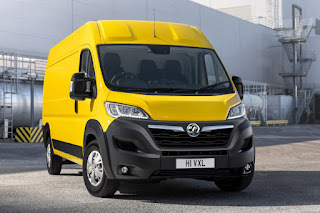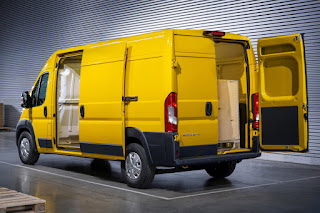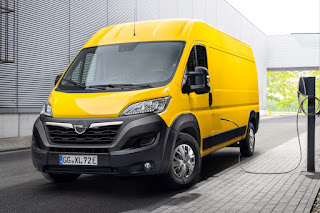New third-gen Vauxhall / Opel Movano unveiled
If the new third-generation Movano looks familiar, that’s because it’s another version of the X250 ‘Sevel’ large van which first appeared in September 2006.
This ubiquitous light commercial vehicle is already marketed across Europe as the Citroën Relay / Jumper, Fiat Ducato and Peugeot Boxer. For North America, the similar Ram ProMaster has been available since 2013.
Such cloning is entirely logical. After all, Vauxhall and Opel were bought by Groupe PSA (owner of Citroën and Peugeot) in 2017, then earlier this year Groupe PSA merged with Fiat Chrysler Automobiles to form Stellantis. Perhaps the only surprising thing is the length of time taken to replace the previous Movano, as that was a rebadged Renault Master.
The next Movano will be produced in numerous guises.
Customers requiring a regular panel van get three seats in the cab, plus a selection of four lengths and three roof heights. Alternatively, crew cab variants can accommodate four extra passengers in a second row. Chassis cab, chassis crew cab and platform cab models complete the line-up.
Gross vehicle weights vary between 2,800 kg (6,172 lb) and 4,000 kg (8,818 lb). Depending on configuration, the Movano’s maximum payload is 2,100 kg (4,629 lb).
The sole diesel powertrain combines a 2.2-litre engine, a six-speed manual gearbox and front-wheel drive. However, there is a choice of outputs ranging from 120 PS (118 bhp / 88 kW) to 165 PS (162 bhp / 121 kW).
A zero-emissions Movano-e is also going to be offered. Its electric motor delivers 122 PS (120 bhp / 90 kW) and 260 Nm (191 lb-ft) of torque, while energy is stored in an under-floor lithium-ion battery pack with a capacity of either 37 kWh or 70 kWh. The former only allows a modest WLTP combined-cycle driving range of 72 miles (117 kilometres), but the latter achieves a much more practical 139 miles (224 kilometres).
Sales of the Movano and Movano-e are due to begin soon. Prices have yet to be announced, though.
Related posts:
The new Vivaro-e Hydrogen uses a fuel cell
Pure-electric Combo-e van unveiled
2021 Vauxhall Vivaro-e prices confirmed
This ubiquitous light commercial vehicle is already marketed across Europe as the Citroën Relay / Jumper, Fiat Ducato and Peugeot Boxer. For North America, the similar Ram ProMaster has been available since 2013.
Such cloning is entirely logical. After all, Vauxhall and Opel were bought by Groupe PSA (owner of Citroën and Peugeot) in 2017, then earlier this year Groupe PSA merged with Fiat Chrysler Automobiles to form Stellantis. Perhaps the only surprising thing is the length of time taken to replace the previous Movano, as that was a rebadged Renault Master.
The next Movano will be produced in numerous guises.
Customers requiring a regular panel van get three seats in the cab, plus a selection of four lengths and three roof heights. Alternatively, crew cab variants can accommodate four extra passengers in a second row. Chassis cab, chassis crew cab and platform cab models complete the line-up.
Gross vehicle weights vary between 2,800 kg (6,172 lb) and 4,000 kg (8,818 lb). Depending on configuration, the Movano’s maximum payload is 2,100 kg (4,629 lb).
The sole diesel powertrain combines a 2.2-litre engine, a six-speed manual gearbox and front-wheel drive. However, there is a choice of outputs ranging from 120 PS (118 bhp / 88 kW) to 165 PS (162 bhp / 121 kW).
A zero-emissions Movano-e is also going to be offered. Its electric motor delivers 122 PS (120 bhp / 90 kW) and 260 Nm (191 lb-ft) of torque, while energy is stored in an under-floor lithium-ion battery pack with a capacity of either 37 kWh or 70 kWh. The former only allows a modest WLTP combined-cycle driving range of 72 miles (117 kilometres), but the latter achieves a much more practical 139 miles (224 kilometres).
Sales of the Movano and Movano-e are due to begin soon. Prices have yet to be announced, though.
Related posts:
The new Vivaro-e Hydrogen uses a fuel cell
Pure-electric Combo-e van unveiled
2021 Vauxhall Vivaro-e prices confirmed







%2BDashboard.jpg)

+Front+Side.jpg)

+Front+Side.jpg)

Comments
Post a Comment